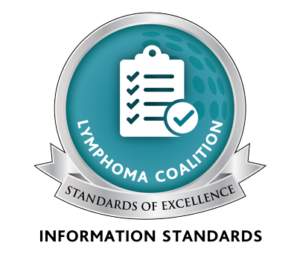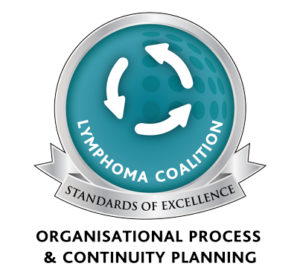Clinical Grading of NHL
Once the NHL type, or classification, has been determined, it is then important to determine the stage and grade of the NHL. The grade of the tumour provides information on how aggressive the tumour is and helps predict how the tumour will behave. This information helps determine the aggressiveness of the treatment approach. The grade is determined by the appearance of the cancer cells, what unique characteristics they have, how they function and how quickly they grow and divide. The grade is referred to as low-grade, intermediate-grade or high-grade NHL. Low-grade NHLs are often called indolent or slow-growing NHLs. Intermediate and high-grade NHLs are often called aggressive or fast-growing NHLs.
The following table summarizes the specialized process of classifying, staging and grading NHL:
| NHL Description | What It Describes | |
| Classification | NHL type | |
| Stage | Extent of spread | |
| Grade | Aggressiveness | → Indolent NHL (low-grade, slow-growing)
→ Aggressive NHL (intermediate and high-grade, fast-growing |
Indolent and Aggressive NHL
NHL is commonly referred to as either indolent or aggressive.
Indolent NHL is a low-grade NHL, meaning the tumour grows very slowly and patients often do not show symptoms until late in the disease. As a result, indolent NHL tends to be widespread at the time of diagnosis. Patients diagnosed with indolent NHL often do not require immediate treatment, and a watchful waiting approach is often employed. Treatment is eventually required and is usually effective at shrinking tumours and giving the patient a disease-free period, called remission. However, indolent NHL may relapse and subsequent rounds of treatment are often required. Sometimes low-grade, indolent NHL will transform into an intermediate or high-grade (aggressive) lymphoma, at which point the patient will require more urgent, intensive treatment. However, patients with indolent NHL often live for a long time and enjoy a good quality of life, and some patients may never even require treatment. Examples of indolent NHL include follicular lymphoma, small lymphocytic lymphoma and MALT lymphoma.
Intermediate and high-grade NHLs generally grow a lot faster than the indolent lymphomas, and for this reason they are referred to as aggressive, or fast-growing lymphomas. Unlike indolent lymphomas, aggressive NHLs require intensive treatment immediately after diagnosis. Although the word aggressive sounds frightening, aggressive lymphomas show an excellent response to treatment and patients can often be cured. Indolent lymphomas that transform into aggressive lymphomas can be more difficult to treat. The following table gives an overview of the main differences between indolent and aggressive NHL. An explanation of all the different types of NHL follows.
| Indolent NHL | Aggressive NHL | |
| Proportion of NHL cases | 40%–50% | 50%–60% |
| Rate of cancer growth | Slow | Fast |
| Symptoms | Patients commonly have no symptoms at diagnosis. | Patients usually experience symptoms which prompt a doctor’s visit and subsequent diagnosis. |
| Treatment timing | Patients often may not require immediate treatment. The watchful waiting approach is often employed here. | Patients may require immediate, more intensive treatment. |
| Prognosis | Responds well to treatment. Relapse is common and subsequent treatment is often required. | Excellent response to treatment. |





